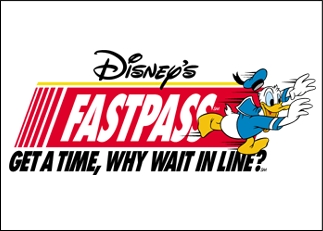DISNEY - Disney Fastpass

Disney's FastPass is a virtual queuing system created by the Walt Disney Company. First introduced in 1999 (thugh the idea of a ride reservation system was first introduced in world fairs), FastPass allows guests to avoid long lines at the attractions on which the system is installed, freeing them to enjoy other attractions during their wait. The service is available at no additional charge to all park guests.
--- Wikipedia
Disneyland is a large theme park with plenties of entertainment facilities, also with a large number of tourists. Normally, you need to wait for a long time before getting the chance to enjoy any of the attractions. The FastPass is a system allowing you to pick up FastPass-tickets in some specific position, and use them at the corresponding facility to avoid long lines. With the help of the FastPass System, one can arrange his/her trip more efficiently.
You are given the map of the whole park, and there are some attractions that you are interested in. How to visit all the interested attractions within the shortest time?
Input
The first line contains an integer T (1 ≤ T ≤ 25), indicating the number of test cases.
Each test case contains several lines. The first line contains three integers N, M, K (1 ≤ N ≤ 50, 0 ≤ M ≤ N(N-1)/2, 0 ≤ K ≤ 8), indicating the number of locations(starting with 1, and 1 is the only gate of the park where the trip must be started and ended), the number of roads and the number of interested attractions.
The following M lines each contains three integers A, B, D (1 ≤ A, B ≤ N, 0 ≤ D ≤ 104) which means it takes D minutes to travel between location A and location B.
The following K lines each contains several integers Pi, Ti, FTi, Ni, Fi,1, Fi,2 ... Fi,Ni-1, Fi,Ni, (1 ≤ Pi, Ni, Fi,j ≤ N, 0 ≤ FTi ≤ Ti ≤ 104), which means the i-th interested attraction is placed at location Pi and there are Ni locations Fi,1, Fi,2 ... Fi,Ni where you can get the FastPass for the i-th attraction. If you come to the i-th attraction with its FastPass, you need to wait for only FTi minutes, otherwise you need to wait for Ti minutes.
You can assume that all the locations are connected and there is at most one road between any two locations. Note that there might be several attractions at one location.
Output
For each test case in the input, print one line: "Case #X: Y", where X is the test case number (starting with 1) and Y is the minimum time of the trip.
Example
Input: 2 4 5 2 1 2 8 2 3 4 3 4 19 4 1 6 2 4 7 2 25 18 1 3 4 12 6 1 3 4 6 2 1 2 5 1 4 4 3 1 1 3 2 1 3 4 1 2 4 10 2 8 3 1 4 4 8 3 1 2 Output: Case #1: 53 Case #2: 14
hide comments
|
|
Rocker3011:
2013-08-09 04:41:56
can i have some hint about the complexity of the problem? |
|
|
Niklas Baumstark:
2012-09-20 23:32:20
Getting WA, but I have no idea how to debug it.. I have already written a brute-force checker that gives the same results. Any hints? Submission ID is 7690675
|
| Added by: | Bin Jin |
| Date: | 2011-11-08 |
| Time limit: | 4.349s |
| Source limit: | 50000B |
| Memory limit: | 1536MB |
| Cluster: | Cube (Intel G860) |
| Languages: | All except: ASM64 |
| Resource: | ACM/ICPC Regional Contest, Chengdu 2011 |

 RSS
RSS